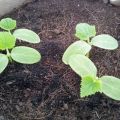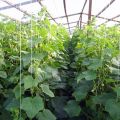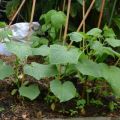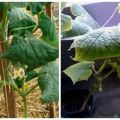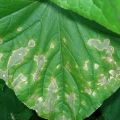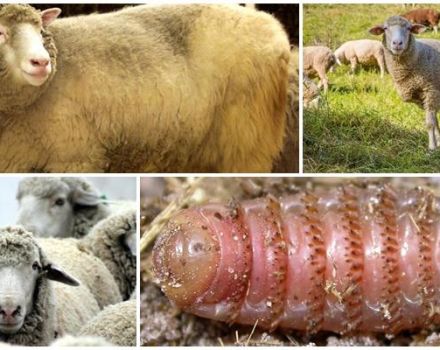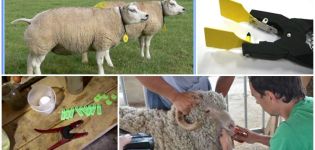Description of the Marinda cucumber variety, their yield and cultivation
Cucumber Marinda f1 became a successful brainchild of Dutch breeders of the Monsanto company. In 1994, the variety went on sale and fell into the hands of our vegetable growers. The hybrid quickly became widespread and received the most positive reviews, possessing the following characteristics:
- early maturing;
- universal (for indoor and open ground);
- parthenocarpic;
- high-yielding;
- gherkin;
- disease resistant;
- delicious, without bitterness.
Growing
Crispy cucumbers Marinda win more and more hearts of housewives and vegetable growers every year. The amazing yield of the hybrid (25-28 kg / m²) is combined with the excellent quality of the gherkins themselves. The variety is versatile, shows good results in greenhouses and unprotected ground.
The bush grows quite powerful, but when properly formed, all fruits receive enough light.
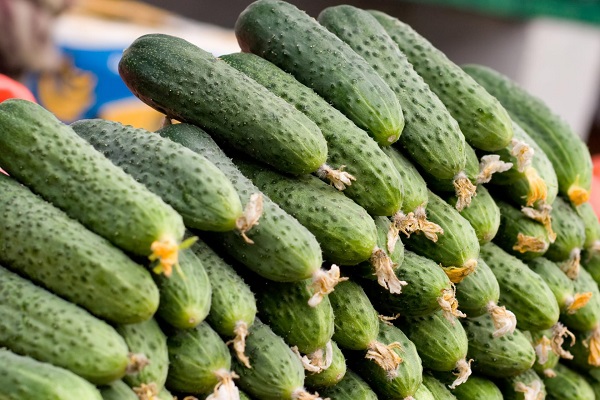
A place for the garden is chosen sunny, but sheltered from the wind. It is good if legumes, greens, root crops, cabbage grew there in the previous year. It is not allowed to plant cucumbers after any melons and gourds, they have common diseases and pests.
Organic and mineral components are introduced into the dug soil: peat, rotted manure, compost, sawdust, ash, complex mineral fertilizers in granules (according to the instructions). As a result, you should get a light humus soil mixture, saturated with minerals, to a depth of 25-30 cm. Before planting seedlings, the soil is abundantly watered with hot water.

Seedling
The seedling method of growing cucumbers has established itself as the most productive. Compared to planting seeds directly into open ground, plants have more warm season for fruiting.
Seeds of cucumbers two or three years ago show better germination than last year. It is helpful to first soak the seeds in a growth promoter and germinate.
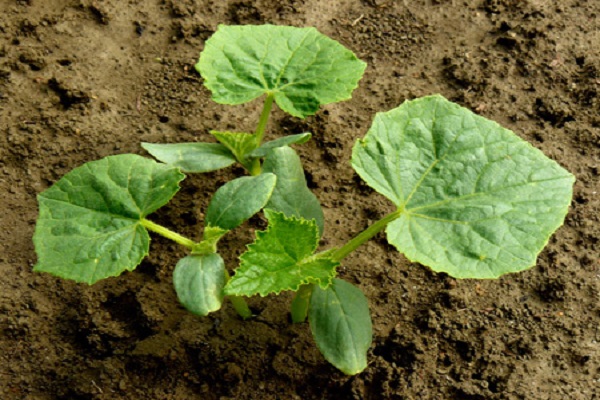
Marinda f1 cucumbers need a light soil mixture saturated with organic matter. Compost, humus, rotted sawdust and crushed peat are favorite ingredients of this crop.

Each bush is grown in a separate glass with a volume of 400-500 ml. Cucumbers sprout at a temperature of 24-25 ℃. Then the temperature is slightly reduced, to 19-20 ℃ during the day and 17-18 ℃ at night. Plants are watered often enough, with warm water, not allowing the earthen coma to dry out. 10 days before the planned planting in open ground, seedlings begin to be taken out in the open air during the day, gradually increasing the hardening time.
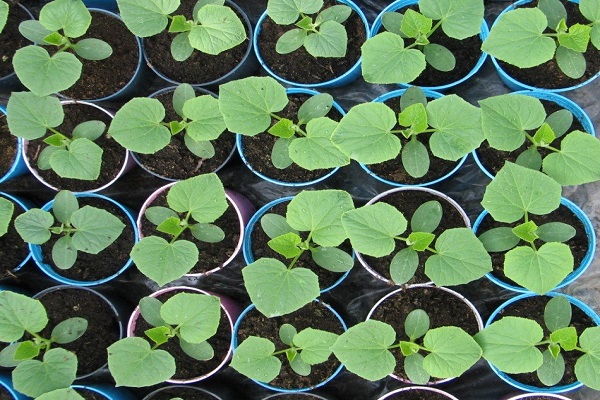
At the age of 20-30 days, cucumbers release 3-4 true leaves, and are ready to be transplanted to a garden bed or to an unheated greenhouse.
Bush formation
Seedlings are planted in 3-4 bushes per 1 m². The Marinda hybrid is formed into one stem, pinching the lateral shoots after 2-4 leaves.After planting Marinda cucumber seedlings in the ground, you need to let the bush grow stronger and take root. Therefore, the first inflorescences and shoots up to 5-6 leaves are removed, preventing the plant from spending energy on an ovary too early.
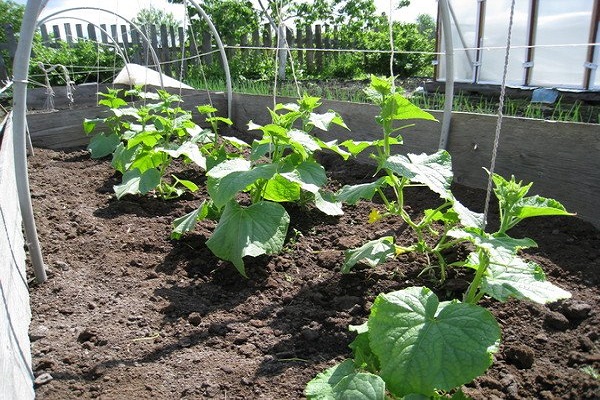
The accepted bush is tied to trellises. For a weak root system of a cucumber, it is useful to carry out high hilling several times per season. The yellowed leaves are regularly pruned, thereby renewing the bush.
The Marinda hybrid is a genetically bred parthenocarpic, so the flowers do not need pollination and the cucumbers can be grown indoors. In the axils of leaves, inflorescences lay the ovary in large bunches, often 5-7 pieces. With proper care, all cucumbers are successfully poured, delighting gardeners with a harvest.
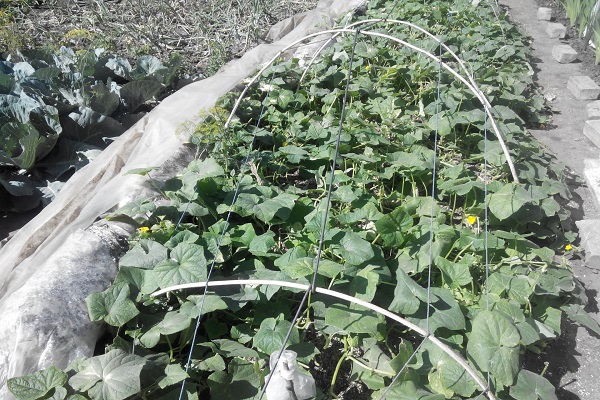
Top dressing
The description of the Marinda f1 variety promises a yield of up to 28 kg / m². To obtain such results, the most important condition for hybrid agricultural technology is timely feeding.
The active growth of the bush and the filling of such a quantity of cucumbers requires a large amount of nitrogen, potassium and phosphorus, which even the most nutritious soil is not able to provide.
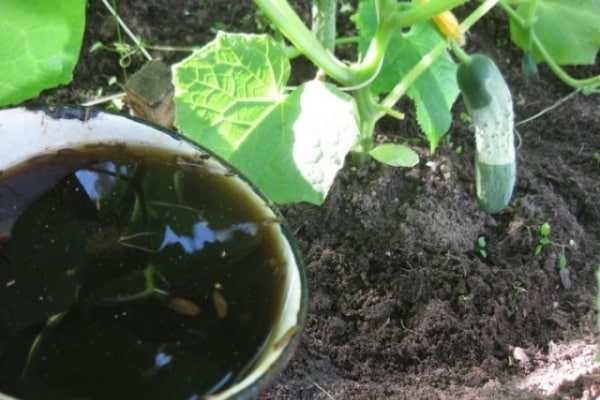
Every 10-15 days, plants need root feeding. You can alternate organic (infusion of bird droppings or mullein) and complex mineral fertilizers (for example, "Solution", "Zdraven"). Nutrient solutions are poured into the beds warm.
Watering
Cucumbers came to us from the tropics, so the culture itself is quite moisture-loving and thermophilic. Through the labor of breeders, hybrids acquire more and more yield and early maturity. Such properties increase the requirements of plants for irrigation. Cucumber roots grow in the surface layer, and the lack of water is very poorly tolerated.
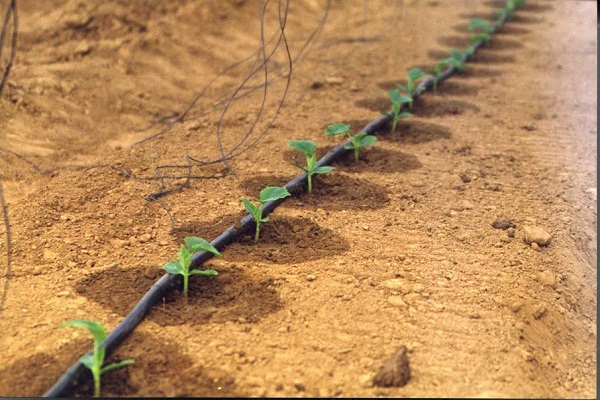
For the Marinda cucumber variety, frequent watering with warm water is one of the main conditions for good fruiting. In hot weather, moisture should be supplied daily.
It is advisable to mulch the soil of the beds with sawdust, peat, dry grass, straw. This will help keep the surface layer moist and create a favorable environment for earthworms to colonize.
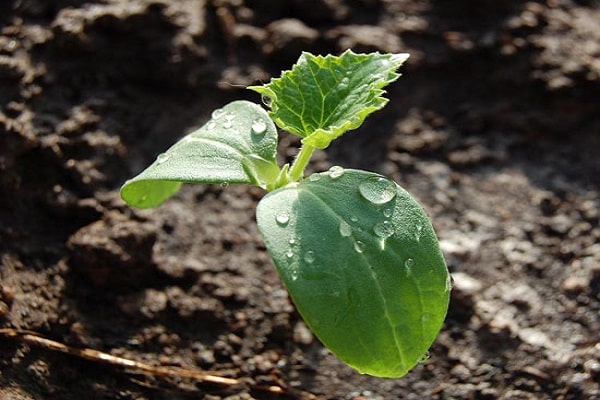
Diseases and pests
In the description of cucumber Marind f1 it is said that the variety is genetically resistant to serious diseases of cucumbers:
- olive spot;
- cladosporiosis;
- scab;
- spotted mosaic;

Seed treatment, competent crop rotation and the formation of ungilled plantings reduce the likelihood of Marinda's diseases to almost zero.
The remains of plants after the end of the season are removed from the site. In greenhouses, every year it is necessary to completely replace the soil and treat all structures with antiseptics.

The following diseases were rarely seen in the Marind f1 hybrid:
- angular spotting (treatment with Kuproksat or Abiga-Peak preparations);
- anthracnose (treatment with Metaxil, Gamair, Abiga-Peak);
- downy mildew (treatment with Orvego, Alirin-B, Acrobat MC).
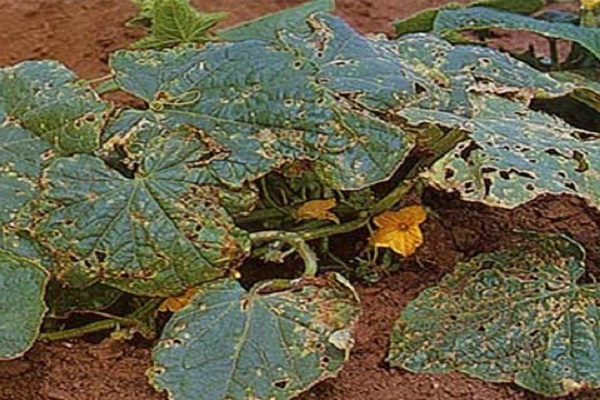
In case of violation of crop rotation, untimely weeding and other assumptions, cucumbers can be attacked by pests:
- aphids (treatment with Fitoverm, Aktofit);
- spider mite (treatment with Fitoverm);
- greenhouse whitefly ("Vertimek", "Aktellik", "Fitoverm", "Commander");
- slugs (mechanical collection of pests).

Harvest
Marinda begins to bear fruit in 45-50 days. Many vegetable growers note the similarity of fruits and plants with cucumbers of the domestic variety Amur f1.
Zelentsy are large tuberous, dark green with white thorns and light stripes. The size is gherkin, 8-10 cm, but you need to harvest regularly. Cucumbers quickly cask and lose their flavor.
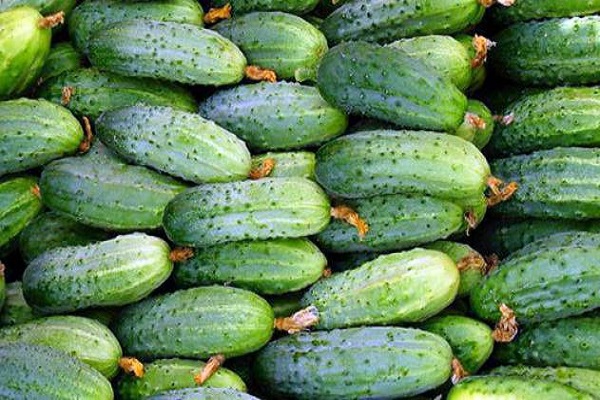
Important!
The Marinda hybrid is picky about frequent harvesting. Cucumbers quickly overripe and interfere with the pouring of new fruits.
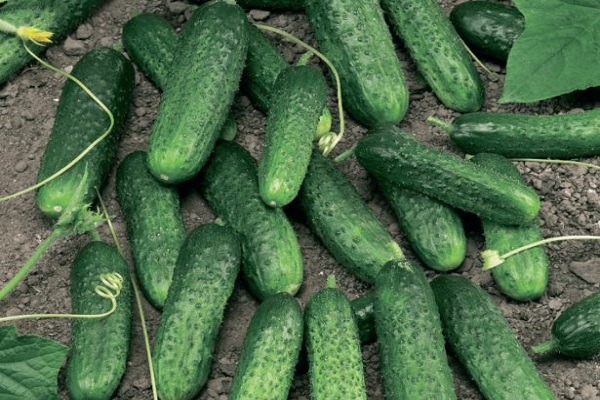
The reviews of vegetable growers about the Marinda variety are most often positive. The pulp is pleasant, aromatic, with small seed chambers, without bitterness. Crispy Marinda cucumbers behave well when salted and preserved.
The hybrid quickly adapts to weather conditions and is able to endure small cold snaps without ceasing to delight with the harvest. Cucumbers are quite dense and can be transported well.



